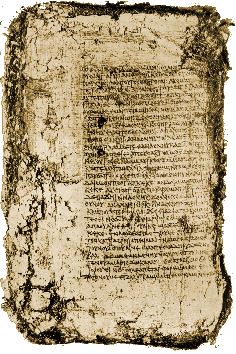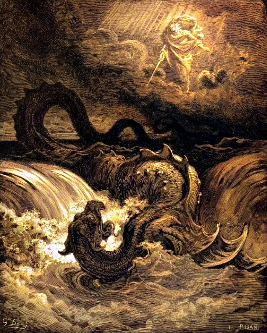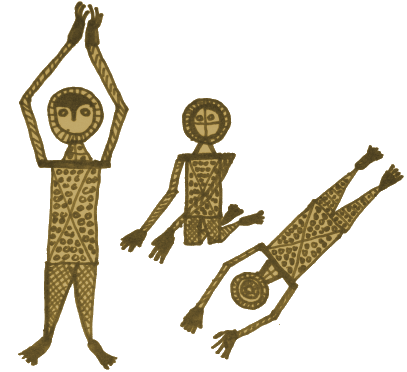2nd
FORTNIGHT of WINDSTAR
As Utilized by the 5 Mt System of Miryai
In the Living Gods, Let the
hallowed Light of Transcendant Truth be praised. Let the Sweet Mystery
of Miryai awaken in the heart of hearts.
FORTNIGHT OVERVIEW



The Ego, Ptolemy Egypt, Theraputai, Sethite Gnostics
Summer - Fortnight 7 (Wind+Zephyr)
Jung's Shadow
Group 2: Void/Metal – Shadow (Confronting the
Hidden Self)
Elemental Focus: Void/Metal represents clarity,
purity, and inner truth, aligned with the Shadow, the repressed self.
Thematic Tone: These exercises confront the soul’s
descent into darkness, inspired by Sophia’s fall (Pistis Sophia) and alchemical
Nigredo.
 Feast/Jun
24: Various Gnostic enclaves of first
and second century Egypt. Repentance's of Pistis Sophia after chasing
false light. False light equating with false goodness and virtue signaling.The
need to be liked, to fit in, to conform. Attraction to acceptance, praise,
social advancement. False gods. Sethite Gnostics of the first few centuries
AD.
Feast/Jun
24: Various Gnostic enclaves of first
and second century Egypt. Repentance's of Pistis Sophia after chasing
false light. False light equating with false goodness and virtue signaling.The
need to be liked, to fit in, to conform. Attraction to acceptance, praise,
social advancement. False gods. Sethite Gnostics of the first few centuries
AD.
First 5 Day Ko
Day 1-5 of 7th Fortnight
Mind:
Separation
Medieval Alchemy: Isolate
valuable elements from impurities through filtration or distillation.
Symbolism: Discernment, distinguishing truth from illusion.
Process: Dividing the solution into distinct parts.
Goal: Clarify the material’s essential components.
Jungian Interpretation:
Differentiate conscious and unconscious aspects, identifying what serves
growth.
Symbolism: Clarity in self-understanding.
Process: Analyzing motivations and conflicts.
Goal: Isolate the psyche’s core elements.
Body: Zephyr
related practices. (daily 20" exercise)
Truths: Litha
like Festival on first day.
History: Pistis
Sophia, a Gnostic text from 1st–2nd century CE Egypt, describes Sophia’s
fall and redemption, linked to Therapeutae communities near Alexandria.
Gnostic statues/icons and meditations on essence fostered repentance from
false light (conformity), aligning inner truth with divine will. Its unique
notion of Sophia’s abortion—veiling creation—critiques egodriven virtue
signaling.
Mythos: Sophia
makes abortion, veils it off from view
Zephyr related practices. (daily 20" exercise)
|
Fortnight Day 1
|
Fortnight Day 2
|
Fortnight Day 3
|
Fortnight Day 4
|
Fortnight Day 5
|
| Feast/Fast |
Litha Festival |
- |
- |
- |
- |
| Practice |
Alchemical Distillation Ritual
Historical Practice: Alchemists distilled plant essences, like rosewater,
meditating on soul purification, per Liber de Arte Distillandi.
Self-Practice: Pour rosewater into a bowl, meditating on its purity
for 10 minutes. Visualize it refining your soul, then reflect on clarity
gained. |
Thomas Merton’s Lectio Divina (Medieval Lens)
Historical Practice: A medieval mystic in Merton’s style practiced
Lectio Divina, reading scripture slowly for clarity, inspired by Merton’s
writings.
Self-Practice: Read a scripture passage slowly, meditating on each
word for 15 minutes. Write a reflection to refine your spiritual insight. |
Sethite Gnostic Scriptural Exegesis
Historical Practice: Sethite Gnostics studied texts like Zostrianos
with precision, meditating on divine truths in hidden gatherings.
Self-Practice: Study a spiritual text, analyzing its meaning for 15
minutes. Write a precise reflection, focusing on divine clarity, and journal
insights. |
Teresa’s Spiritual Writing
Historical Practice: Teresa wrote treatises like The Way of Perfection
with disciplined precision, refining complex ideas in her cell.
Self-Practice: Write a short reflection on a spiritual topic with precision.
Spend 20 minutes refining your ideas, journaling clarified insights. |
Isis Cult’s Star Meditation (Syncretic Echo)
Historical Practice: Medieval mystics, influenced by Isis’ celestial
aspects, meditated on stars for clarity, blending pagan and Christian symbolism.
Self-Practice: Gaze at a star or its image, meditating for 10 minutes
on celestial clarity. Pray for divine truth, noting any refined insights. |
Shadow Focus (Stages 4–6, Fortnight 2, Days 16–29)
Focus: Integrate the shadow—repressed aspects of the psyche (Jung,
Two Essays on Analytical Psychology, CW 7, ¶103).
4. Separation (Days 16–20)
Alchemy: Filter to isolate valuable elements.
Jungian: Discern conscious intentions from shadow
impulses.
Mystic Quote: “Discernment separates truth from
illusion” (A Gnostic Book of Hours, p. 60).
Pistis Sophia: “Light shines in darkness, unseen
by it” (Pistis Sophia, Ch. 1, adapted).
Goal: Recognize shadow motives.
Practice (15–20 min): Journal a recent conflict:
“What hidden impulse drove me?” Draw a mandala of conscious vs. shadow
interplay. Use Edinger’s ego-Self axis to reflect.
Kitchen Experiment: Tsukemono pickling (Japanese,
30 min prep, 2 days ferment). Salt 1 lb cabbage with 2 tbsp salt, pack
tightly in a jar, let ferment. Symbolizes discerning valuable traits. Reflect:
“What am I preserving?”
Outcome: Clarity on shadow projections.
Metrics: Identify one shadow motive (short-term);
reduce projection (long-term).
Second 5 Day Ko
Day 6-10 of 7th Fortnight
Mind:
Conjunction
Medieval Alchemy: Combine
purified elements to form a new substance, uniting opposites (e.g., sulfur
and mercury).
Symbolism: Marriage of opposites, creating balance.
Process: Fusing components in a crucible.
Goal: Create a unified compound.
Jungian Interpretation:
Integrate ego and shadow, forming a cohesive self.
Symbolism: Inner harmony of opposites.
Process: Reconciling logic and emotion.
Goal: Achieve initial psychological balance.
Body: Zephyr
related practices. (daily 20" exercise)
Truths: -
History: Sethite
Gnostics, active in 2nd–3rd century CE Egypt, revered Seth as a revealer,
with Nag Hammadi texts (discovered 1945) like The Second Treatise of the
Great Seth detailing their cosmology. Seed offerings (corn, sorghum) symbolized
spiritual sowing, rejecting worldly entrapment. Their distinctive belief
in alienation from this world emphasized transcendence over social acceptance.
Mythos: Sophia
chases reflected light into Chaos, is entrapped
Zephyr related practices. (daily 20" exercise)
|
Fortnight Day 6
|
Fortnight Day 7
|
Fortnight Day 8
|
Fortnight Day 9
|
Fortnight Day 10
|
| Feast/Fast |
- |
- |
- |
- |
- |
| Practice |
Sethite Gnostic Divine Mind Meditation
Historical Practice: Sethite Gnostics meditated on the divine mind,
seeking clarity, as in The Secret Book of John (Nag Hammadi), visualizing
pure light.
Self-Practice: Visualize pure light in your mind, meditating for 15
minutes on divine clarity. Journal how it refines your spiritual understanding. |
Teresa of Ávila’s Mental Prayer
Historical Practice: Teresa practiced mental prayer, focusing on divine
truths with precision, as in Interior Castle, refining her spiritual insight.
Self-Practice: Sit quietly, focusing on a divine truth (e.g., love).
Meditate for 15 minutes with disciplined precision, journaling any clarified
insights. |
Hildegard’s Linguistic Invention
Historical Practice: Hildegard created Lingua Ignota, a mystical language,
as a meditative exercise, refining her spiritual expression, described
in her works.
Self-Practice: Create a few new words inspired by spiritual ideas.
Meditate on their meanings for 10 minutes, journaling how they clarify
your thoughts. |
Florentine Mystic’s Astrological Study
Historical Practice: Mystics studied star charts, seeking divine clarity
through celestial patterns, inspired by Ficino.
Self-Practice: Study a star chart or draw constellations. Meditate
for 15 minutes on their patterns, seeking divine clarity, and note your
thoughts. |
Pagan-Christian Rune Carving
Historical Practice: Syncretic groups carved runes on wood, meditating
on their meanings for clarity, blending Norse and Christian symbolism.
Self-Practice: Carve or draw a simple rune (e.g., a cross) on wood.
Meditate on its meaning for 10 minutes, focusing on precision, and journal
insights. |
5. Conjunction (Days 21–25)
Alchemy: Unite purified elements.
Jungian: Harmonize ego and shadow.
Mystic Quote: “Light and dark unite in divine union”
(A Gnostic Book of Hours, p. 75).
Hildegard: “The soul is a symphony of opposites”
(Scivias, Book II, Vision 6, adapted).
Goal: Balance conscious and unconscious.
Practice (15–20 min): Visualize ego and shadow in
dialogue. Journal acceptance of a shadow trait (e.g., anger). Use Ulanov’s
bridging opposites to foster unity.
Kitchen Experiment: Vegan cheese (Miyoko-style,
Asian/Western, 60 min prep, 2 days ferment). Blend 1 cup soaked cashews,
¼ cup water, 1 tbsp miso, ferment in a jar. Symbolizes balanced
union. Reflect: “What am I integrating?”
Outcome: Reduced inner conflict.
Metrics: Accept one shadow trait (short-term); inner
harmony (long-term).
Third 4/5 Day Ko
Day 11-15 of 7th Fortnight
Mind:
Putrefaction
Medieval Alchemy: Allow
the material to decay, representing the darkest phase of Nigredo.
Symbolism: Death of the old self, confrontation with decay.
Process: Letting the material rot in a sealed vessel.
Goal: Break down the material to its lowest point.
Jungian Interpretation:
Face the shadow, confronting fears or traumas in a psychological "dark
night."
Symbolism: Descent into the unconscious.
Process: Deep introspection or therapy.
Goal: Embrace the psyche’s depths for rebirth.
Body: Zephyr
related practices. (daily 20" exercise)
Truths: Fasta
2 day fast on last two days of fortnight.
History: Desert
Fathers, emerging in 3rd–4th century CE Egypt under figures like Pachomius
(c. 292–348 CE), pioneered monasticism with the Pachomian Rule. Gnostic
sacraments, like Pistis Sophia’s rites, facilitated redemption from chaos,
grounding spirituality in solitude. Their unique idea of inner guidance
via repentance distinguished them from communal monastics.
Mythos: Sophia
repents, Savior lifts her out of Chaos
Zephyr related practices. (daily 20" exercise)
|
Fortnight Day 11
|
Fortnight Day 12
|
Fortnight Day 13
|
Fortnight Day 14
|
Fortnight Day 15
|
| Feast/Fast |
- |
- |
- |
Fasta |
Fasta |
| Practice |
Pagan-Christian Icon Veneration
Historical Practice: Syncretic devotees meditated before plant-based
pigment icons, seeking divine clarity, blending pagan and Christian symbolism.
Self-Practice: Gaze at a spiritual image (e.g., a painted icon), praying
for clarity. Meditate for 10 minutes, refining your focus, and note your
thoughts. |
Alchemical Mercury Meditation
Historical Practice: Alchemists like John Dee contemplated mercury,
symbolizing spiritual clarity. Visualizing its sheen, they purified their
minds, per Turba Philosophorum.
Self-Practice: Visualize liquid mercury’s sheen, symbolizing clarity.
Meditate for 15 minutes in a quiet space, focusing on mental purification,
and journal insights. |
John Dee’s Mathematical Contemplation
Historical Practice: Dee meditated on mathematical patterns, seeking
divine clarity, drawing geometric figures in his study, blending alchemy
and mysticism.
Self-Practice: Draw a geometric shape (e.g., a square). Meditate on
its patterns for 10 minutes, seeking divine clarity, and note your reflections. |
Jung’s Alchemical Symbol Analysis (Medieval Lens)
Historical Practice: A medieval mystic, following Jung, analyzed alchemical
symbols like the ouroboros for spiritual clarity, per Alchemical Studies.
Self-Practice: Draw an alchemical symbol (e.g., ouroboros). Meditate
on its meaning for 15 minutes, refining your insight, and note your reflections. |
Florentine Mystic’s Dream Journaling
Historical Practice: Mystics recorded dreams, seen as flowing wisdom
from God, in journals, exploring the subconscious by candlelight.
Self-Practice: Record a dream in a journal, meditating on its wisdom
for 15 minutes. Visualize it as flowing insight, reflecting on your subconscious. |
6. Putrefaction (Days 26–29)
Alchemy: Allow decay for rebirth (Nigredo).
Jungian: Confront shadow’s deepest fears.
Mystic Quote: “In the dark tomb, the divine spark
awaits” (A Gnostic Book of Hours, p. 90).
Merton: “In the dark night, the soul finds its center”
(New Seeds of Contemplation, Ch. 7, adapted).
Goal: Embrace shadow for renewal.
Practice (15–20 min): Journal a deep fear: “What
does it teach?” Meditate in a cave with a shadow figure (Estés’
descent myth). Reflect on rebirth.
Kitchen Experiment: Compost tea (universal, 30 min
prep, 24 hr steep). Steep 1 cup compost in 1 gal water, strain, use for
plants. Symbolizes decay and renewal. Reflect: “What am I transforming?”
Outcome: Courage for renewal.
Metrics: Face one fear (short-term); resilience
(long-term).

Yesai the Nazorean 2021 - All
Rights Reserved




